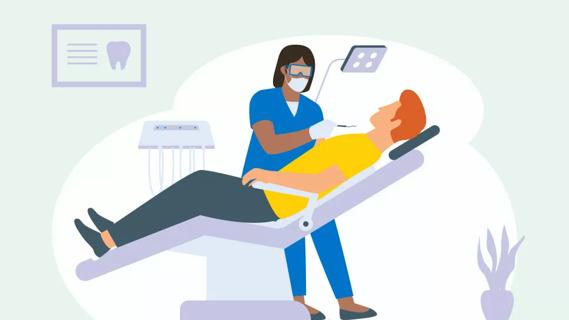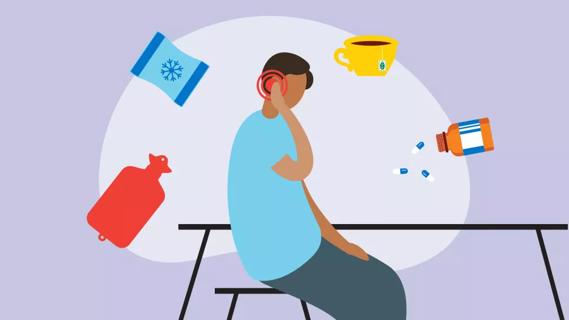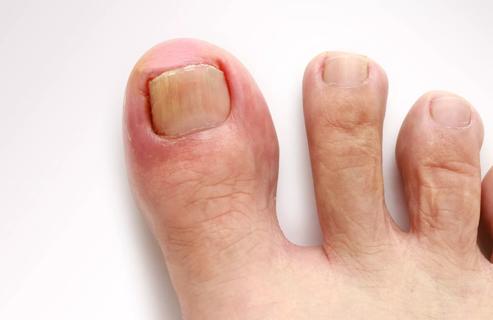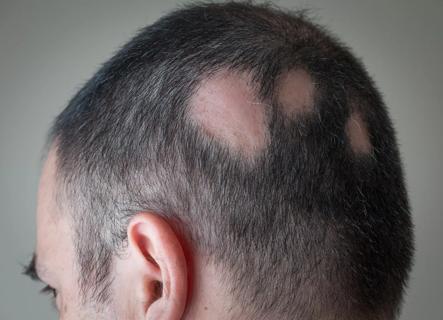Advertisement
Say bye-bye to shaving bumps with a few tricks

If you’re aiming for a smooth, hair-free look, ingrown hairs can ruin the effect. These unsightly bumps can be an annoying side effect of hair removal. The good news is ingrown hairs can be treated effectively at home.
Advertisement
Cleveland Clinic is a non-profit academic medical center. Advertising on our site helps support our mission. We do not endorse non-Cleveland Clinic products or services. Policy
Dermatologist Sherrie Bullard, MD, shares safe ways to get rid of ingrown hairs and how to prevent them from happening.
A hair becomes ingrown if it grows back into your skin while being outside of its hair follicle. The curlier the hair, the more likely it is to become ingrown. A hair can curve back into your skin as it grows out and become trapped under your skin. Friction is also a factor. So, wearing tight clothing such as leggings and jeans can contribute.
Ingrown hairs trigger inflammation as they enter your skin. “The immune system sees the ingrown hair as a foreign object — much like a splinter,” explains Dr. Bullard. “The skin turns red, and pustules develop. These are dead white blood cells. Release of chemicals from the white blood cells is what leads to the inflammation and itching.”
The good news is we aren’t helpless against ingrown hair breakouts. Some simple steps taken at home can eradicate these embarrassing bumps.
The market has exploded with skin care products with different ingredients to help with ingrown hairs. Major online beauty and drug stores carry these products.
“I would recommend this be the first place to go for help with ingrown hairs,” says Dr. Bullard.
These products range from serums to lotions, toners and pads that are gentle exfoliants. They’re a gentler alternative to traditional exfoliants.
Advertisement
One very useful product is adapalene gel, an over-the-counter retinoid medication. This medication can be applied to areas with ingrown hairs to help gently exfoliate until the ingrown hair appears at the surface of your skin. You can then carefully remove the hair with tweezers (see below).
Apply a warm, moist — not dripping — washcloth for 10 to 15 minutes, three or four times a day. Warm compresses soften your skin and may help ease inflammation and discomfort by allowing your skin to open and drain if there’s any pus present.
“Once the skin opens, if the ingrown hair is visible, it can be grasped carefully with clean angled tweezers and the hair pulled out,” advises Dr. Bullard. “Help the skin heal quickly by keeping the area clean and applying antibiotic ointment.”
If the hair is already visible and sticking out of your skin, you can attempt to tweeze the hair out.
Clean the area with warm, soapy water, clean your angled tweezers with alcohol and gently grasp the hair. If it’s difficult to see the area, use extra lighting like an LED ring light and a magnifying mirror. This will allow you to grasp only the hair and avoid damaging your skin. Resist the urge to squeeze.
If the hair is completely under your skin, avoid the temptation to poke the area with a sharp object and dig out the hair. This can lead to infection and scarring. Please see a healthcare professional for help in this situation.
Exfoliation should be approached carefully, as it causes inflammation, which leads to hyperpigmentation and may not be very helpful in resolving ingrown hairs.
What if you’ve tried home remedies, and the ingrown hair just won’t go away? The ingrown hair may eventually make its way out of your skin. But this process can take time. There are also situations where the hair will continue growing under your skin. In this case, Dr. Bullard suggests seeing a dermatologist.
There’s a chance that an ingrown hair can become infected. Be on the lookout for these signs:
If you notice one or more of these symptoms, see a physician or health professional for help as soon as possible.
Advertisement
You can’t always prevent ingrown hairs, but you can take steps to lower the chances of them developing.
If ingrown hairs won’t take a hike, you may need to forgo shaving, waxing or tweezing that area. Consider alternative hair removal options, like laser hair removal. This method targets the hair follicle, and it’s usually permanent. And because the hair doesn’t grow back after treatment, you won’t have to worry about ingrown hairs.
“Laser hair removal is safe and effective on all skin types,” says Dr. Bullard. “If you decide to pursue this method, talk to a doctor who has experience performing this treatment.”
Ingrown hairs can be aggravating, but treat your skin gently. Trying to extract an ingrown hair that isn’t ready can lead to permanent scarring and discoloration.
If these at-home remedies aren’t working, step away from the tweezers and call your doctor. A medical professional can treat ingrown hairs and help you prevent them in the future.
Advertisement
Learn more about our editorial process.
Advertisement

While there’s little risk in trying this hair care treatment, there isn’t much science to back up the claims

Lanugo — the soft, fine hair that develops in utero — is harmless and will shed within a few weeks

If you have naturally red hair, feeling the pain may be in your DNA

Not all ear infections need antibiotics — cold and warm compresses and changing up your sleep position can help

Pain meds, toenail protectors and petrolatum jelly may spare you a trip to a podiatrist

On their own, honey can help soothe a sore throat and garlic has immunity-boosting properties, but you don’t need to go the fermented route

A gentle hair care routine, stress reduction and sun protection can help reduce flares and maintain your locks

Eye drops and cold water rinses can help speed up healing for viral and allergen-related conjunctivitis, but a bacterial infection will need antibiotics

Your metabolism may torch 1,300 to 2,000 calories daily with no activity

A gentle touch in all the right places may help drain your sinuses